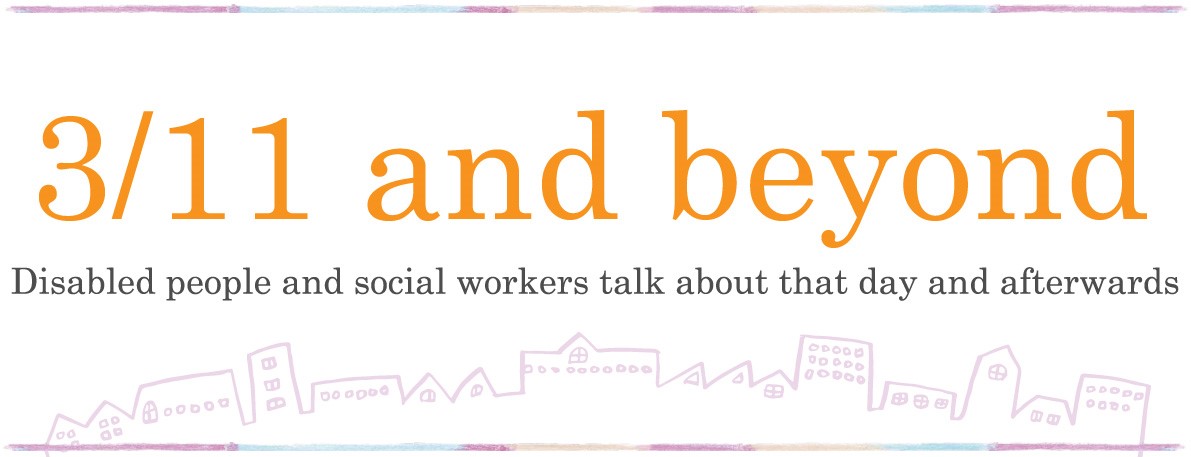Welfare evacuation center
About the foundation’s other facilities
It wasn’t actually designated, but we had one evacuation center especially for disabled people. Social workers, disabled people, and their families who had lost their homes lived together in the mornings and evenings, and during the day they continued their activities as usual. The family members also went to their jobs and such from there.
Non-disabled people from the region also evacuated to our other facilities, and some of them stayed until August at the latest. Those facilities also asked Kesennuma City to support them as evacuation centers for the disabled, and got special public aid.
Those facilities shared their supplies with Nozomi, so we distributed them to our trainees living in shelters.
Role of welfare facilities
There are cases where welfare facilities become evacuation centers but Sakura Gakuen won’t play that role. We may be able to work at evacuation centers where we stay as an ad hoc welfare functions for other evacuees who have disabilities. I heard in a meeting with other welfare organizations that some mothers who had children with disabilities experienced difficulties after the disaster. They wanted to go out from their houses to get some supplies since these items didn’t get to their houses. However, they had to make a long queue to receive these supplies, for example two hours to obtain water. Kids with hyperactivity disorder, for example, wouldn’t be able to be in a line for that long. These mothers said that they would be able to get water or go out to buy things if someone could take care of their kids, I was told at the meeting. I think this is an area we would be able to play a role because welfare facilities are public spaces and social resources.
As for ourselves at Sakura Gakuen, there are discussions whether we need to plan on these issues and go forward to do some activities with local authorities. Some people say it’s rather too much of a work for us. I still believe that personnel at local authorities can keep these possibilities in mind.
Spending nights at roadside rest area
Ai’s house was damaged by the tsunami on the first floor.
Kumai: After the disaster, former director of the facility and I visited Ai’s house. I asked if she was able to sleep on the second floor of the house. I was worried she may not have been able to sleep there. She was scared of aftershocks, and they went to a roadside rest area called Johbon no Sato at night and slept in their sedan car, I was told.
I talked with Shoshin Kai (another social welfare foundation) and asked them to provide a room for Ai and her family in their facility, which was authorized as evacuation center for the disabled (in which persons with disabilities and their families took refuge). Luckily, they had one room available.
What did you talk about in the car with your parents?
Ai: About people affected by the disaster, and so on.
Kumai: You were also cleaning.
Ai: Yes!
Kumai: She went home during the day and helped clean the house.
To the Evacuation Center for Vulnerable People
I hear you had been receiving vocational guidance from the foundation for a while, and you came to this evacuation center after talking with the foundation’s staff and nurses.
Konno: Yes. (To “Hitakami-en,” part of the same foundation that operates Kanan where Mr. Konno is currently working.)
Yanagibashi: (After the earthquake,) Mr. Konno was depending on a general evacuation center, but he was immediately taken in by relatives along with his siblings. But they needed to think about the future because they had lost their parents (in the earthquake), so they discussed their options with their relatives and nearby social workers. They ended up deciding to enter an evacuation center that had just been established at “Hitakami-en,” which is part of our foundation. The three of you started living in the evacuation center after that, right?
Konno: Yes. I was with my brother and sister at “Hitakami-en,” so we could eat meals and take baths there.
Yanagibashi: Then you moved to temporary housing, and now the three of you are living in public housing.

